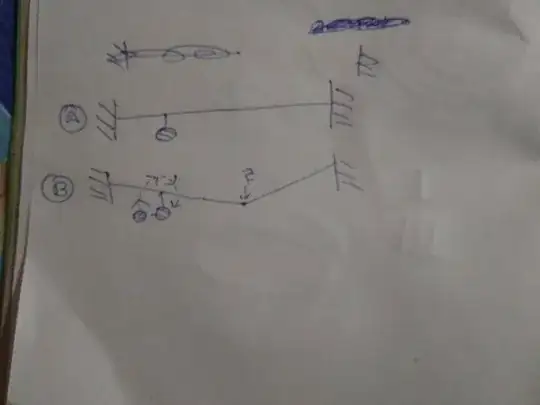If there's a rope which two sides are attached to the wall and a rigid body is hanged down from the rope (that body has light mass )in a such situation if a force is applied on the rope at any point on it then why that rigid body starts to rotate?

If there's a rope which two sides are attached to the wall and a rigid body is hanged down from the rope (that body has light mass )in a such situation if a force is applied on the rope at any point on it then why that rigid body starts to rotate?

The question is still a little unclear; however, two things I can think of are:
I think what you are describing is the plucked string spinner which used to be a popular home-made toy.
Instead of a mass on a string (like a simple pendulum), a button or washer or card works even better. The card should either have a large hole concentric with the centre of mass (like a washer) or a smaller hole which is slightly off-set from the centre of mass (like a button). The key factor is that the centre of mass should not coincide with the string (about which the object rotates), but neither should it be far away.
When the hanging mass/washer/card is moved up and down in a vertical plane there should in theory be no sideways motion. However, this kind of motion is unstable : very small sideways motion is rapidly amplified by the up and down motion and quickly become a rotation. The only stable position is with the mass above the string - which has to be replaced by a rigid rod. See Kapitza's Pendulum.
Something similar happens when you 'pump' yourself on a swing by alternately standing up and crouching down as the swing passes through the lowest point. With practice you can quickly execute a 360 degree swing - provided that the ropes/chains are replaced by rigid rods.
Another similar motion is spinning a hula hoop around your waist or wrist. After a slight push to start the rotation you can maintain or increase the speed using a very small forward-and-backward wiggle.
A similar toy is described in Vibration to Torque: Magic Motor. This converts the small amplitude vibration of a stick into a large circular motion of a propeller.
I think you are referring to the highly formalized case of a strand in a thread. It is true that broken strands rotate around the string if you pull it, but it has nothing to do with physics!
Strings are made by spinning strands together. It gets unwind-ed if you pull it. This causes the strands standing out to rotate!